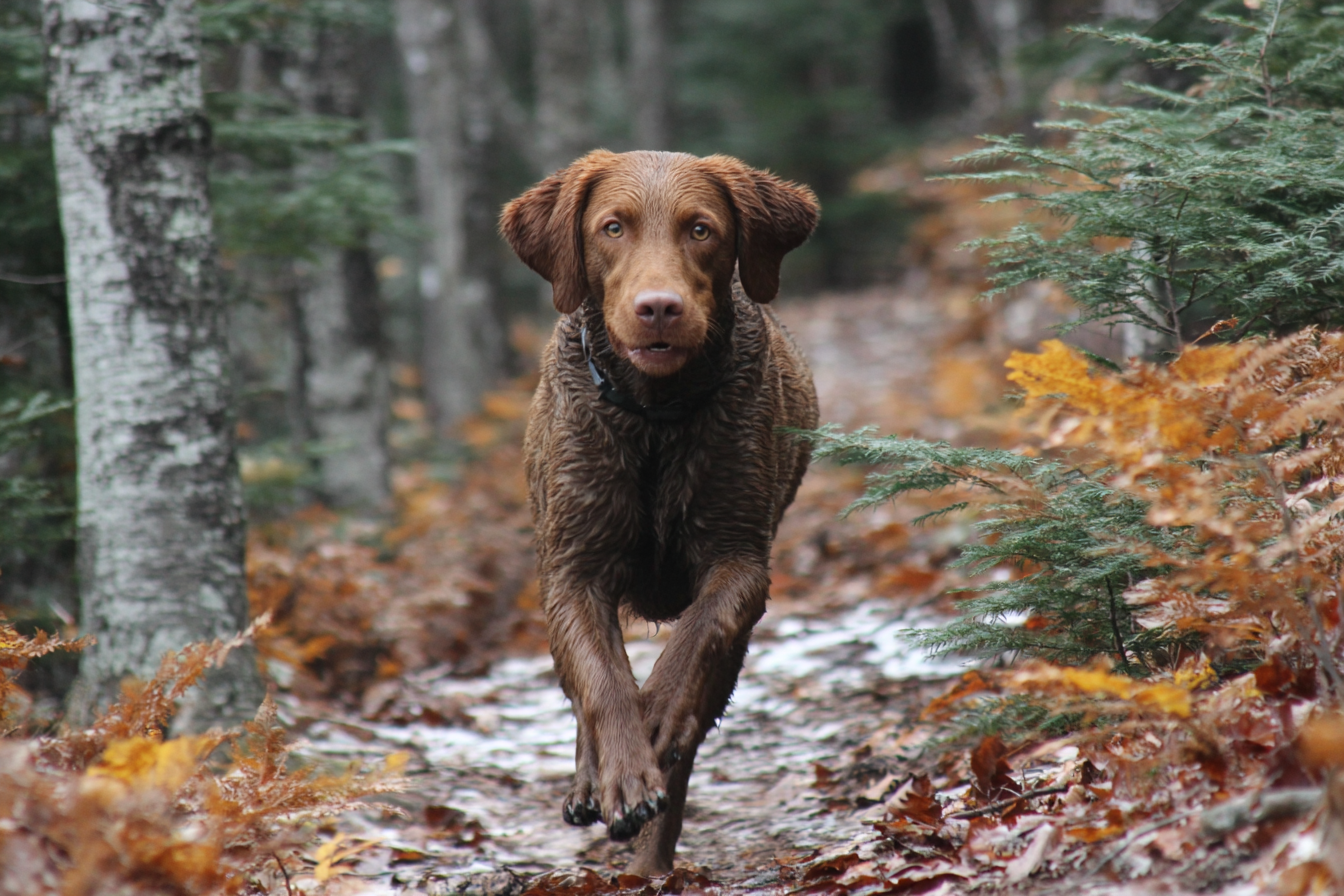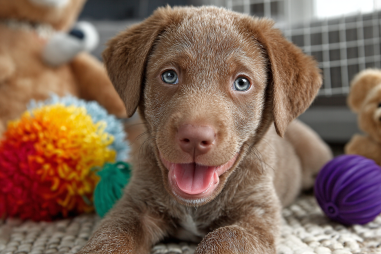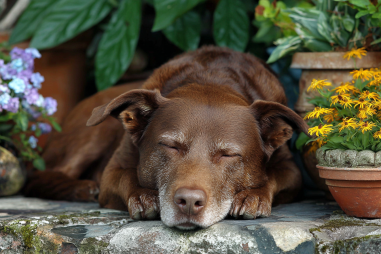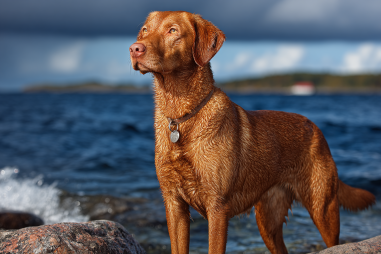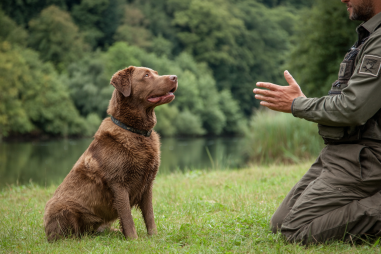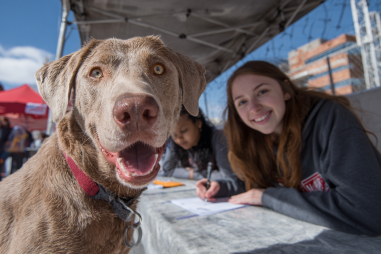The Chesapeake Bay Retriever, affectionately known as the “Chessie,” is a vibrant and intelligent breed renowned for its love of water, boundless energy, and unwavering loyalty. This breed isn’t just a charming companion; they are built for action and require a solid amount of physical and mental activity to thrive. Understanding and meeting the exercise needs of a Chesapeake Bay Retriever is essential to keeping them happy, healthy, and well-behaved. If you’re a Chessie owner or considering adopting one, this guide will walk you through everything you need to know about providing the perfect exercise regimen tailored to this lively breed.
Understanding the Chesapeake Bay Retriever’s Energy Levels
Chesapeake Bay Retrievers were originally bred for hunting and retrieving waterfowl in the tough conditions of the Chesapeake Bay area. Their history as working dogs has endowed them with high stamina and a natural drive to stay active. This breed is energetic, intelligent, and often quite independent, which means they are happiest when given plenty of opportunities to exercise both their bodies and minds.
Chessies are not the type to be content with a few short walks around the block. Their energy levels demand vigorous, sustained activities. Without enough exercise, they may become restless, bored, or even destructive. This breed thrives on routine physical challenges that engage their strong swimming instincts and natural retrieving habits.
Daily Exercise Recommendations
To keep a Chesapeake Bay Retriever physically fit and mentally engaged, they generally need at least 1 to 2 hours of quality exercise each day. This can be broken down into multiple sessions that combine different types of activity, including walks, runs, playtime, and training exercises.
Consistency is key. The breed benefits from daily exercise rather than occasional bursts of activity. Without a regular exercise schedule, your Chessie may develop behaviors such as excessive barking, digging, or chewing as a way to burn off pent-up energy.
When planning your routine, consider your dog’s individual personality and energy levels. Some Chessies may have a slightly calmer disposition, but most will require a robust exercise regimen to stay balanced and happy.
Ideal Physical Activities for Chesapeake Bay Retrievers
Given the breed’s background and temperament, certain physical activities are especially well-suited for Chesapeake Bay Retrievers:
- Swimming: Chessies are natural swimmers with water-resistant coats and webbed toes, making swimming an excellent low-impact exercise that builds endurance without stressing joints.
- Running and Jogging: If you enjoy running, your Chessie can be a great companion on jogs. Just ensure a proper warm-up and avoid overly hot weather.
- Hiking: Their stamina and curiosity make Chesapeake Bay Retrievers great hiking partners, exploring trails while getting plenty of exercise.
- Fetch and Retrieve Games: Classic games of fetch tap into their retrieving instincts and allow for high-energy play sessions.
- Agility Training: Agility courses challenge their bodies and minds, helping develop coordination, speed, and quick thinking.
Incorporating a variety of activities helps keep your Chessie engaged and prevents boredom from setting in.
Mental Stimulation Exercises
Physical exercise alone isn’t enough for a Chesapeake Bay Retriever. These intelligent dogs require mental stimulation to satisfy their curious minds. Boredom can quickly lead to destructive behaviors, so it’s important to incorporate brain games and training challenges regularly.
- Obedience Training: Regular training sessions reinforce good behaviors and tire your dog mentally.
- Puzzle Toys: Interactive toys with hidden treats promote problem-solving and keep your Chessie occupied.
- Tracking and Scent Work: Chessies have a keen nose and enjoy scent-based games that mimic their natural hunting instincts.
- New Tricks and Commands: Continuously teaching new commands or tricks helps maintain mental sharpness.
Combining these mental exercises with physical activity provides a balanced routine that keeps your Chesapeake Bay Retriever well-rounded and content.
Managing Exercise for Puppies and Senior Chessies
Exercise needs change notably throughout a Chesapeake Bay Retriever’s life stages. Tailoring activity to age helps protect their developing or aging bodies.
Puppies
Young Chessie puppies have lots of energy but should avoid intense exercise that could damage their growing bones and joints. Short, frequent play sessions and gentle socialization exercises are best. Avoid long runs or high-impact games until they’re fully grown (usually after 12-18 months).
Seniors
Older Chessies may slow down but still require daily exercise to maintain muscle tone and joint health. Low-impact activities like gentle walks and swimming are ideal. Be mindful of arthritis or mobility issues and adjust the intensity accordingly.
Always consult with your veterinarian to create a safe and effective exercise routine for your dog’s specific developmental stage or health condition.
Safety Considerations During Exercise
Keeping your Chesapeake Bay Retriever safe during exercise is just as important as meeting their activity requirements. Here are some vital safety tips:
- Hydration: Always provide fresh water, especially after vigorous play or swimming.
- Weather Awareness: Avoid strenuous exercise in extreme heat or cold to prevent heatstroke or hypothermia.
- Supervision: Monitor your dog during outdoor activities to protect against hazards like traffic, wildlife, or rough terrain.
- Proper Gear: Use a comfortable harness or collar, and consider safety vests or booties in challenging environments.
- Warm-up and Cool Down: Gradual warm-ups and cool-downs help prevent muscle strains.
- Know Your Dog’s Limits: Adjust exercise intensity if you notice signs of fatigue, limping, or discomfort.
Safe exercise habits will ensure your Chessie enjoys an active lifestyle free from preventable injuries.
Keeping Your Chesapeake Bay Retriever Happy and Healthy
Chesapeake Bay Retrievers are uniquely suited to active owners who enjoy spending time outdoors and engaging in diverse physical and mental activities. Meeting their high exercise requirements helps reduce behavioral problems and promotes a longer, happier life. Remember to provide an enriching mix of swimming, running, play, and brain challenges tailored to your dog’s age and health.
With the right balance, your Chesapeake Bay Retriever will reward you with unwavering loyalty, boundless enthusiasm, and a joyful spirit that lights up every day.

